SUMMARY
PREVALENCE: Rare
ACTIVE PERIOD: Nocturnal & diurnal
KEY ID FEATURES: Dark brown shell occasionally with orange flecks when mature, light brown shell with bright orange belly with yellow face stripe as juveniles, when mature heavily armored head is too large to retract into body, flat shell with long tail
BEHAVIOR: Actively hunt in at night and day in and around mountain streams and pools, highly capable rock climbers and also extremely adept in the water. Skittish and quick to dive into deep pools or wedge into rock crevaces
SIZE: Medium/Large - 10-15 inch shell
IUCN: EN - Endangered
QUICK ASSESSMENT 0-10
GALLERY
IMPORTANT: Most turtle species in Hong Kong are poached for both the Chinese Medicine and pet trades. You should never reveal location of encountered turtles on social media to reduce the ability of poachers to effectively hunt these extremely vunerable animals.
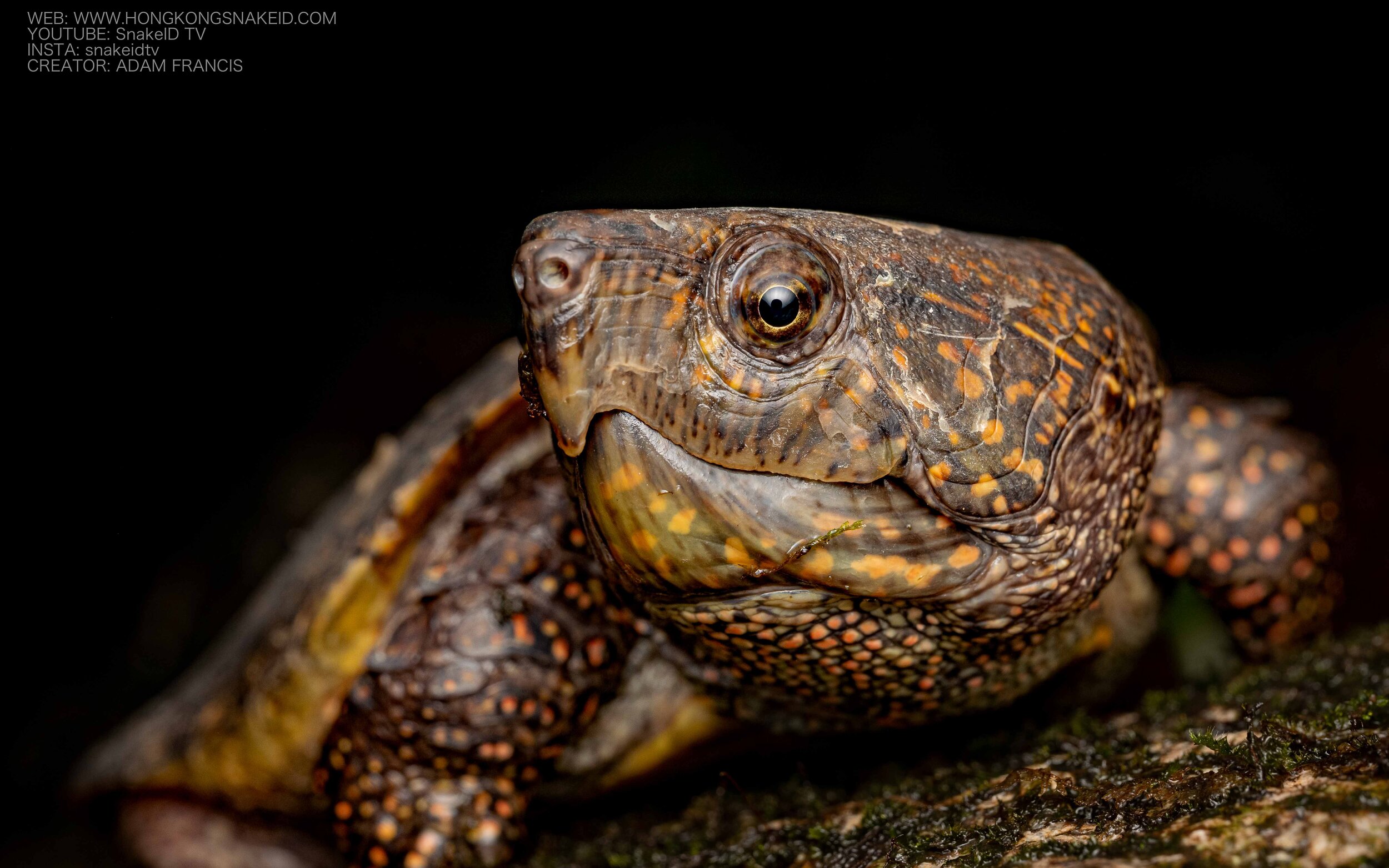

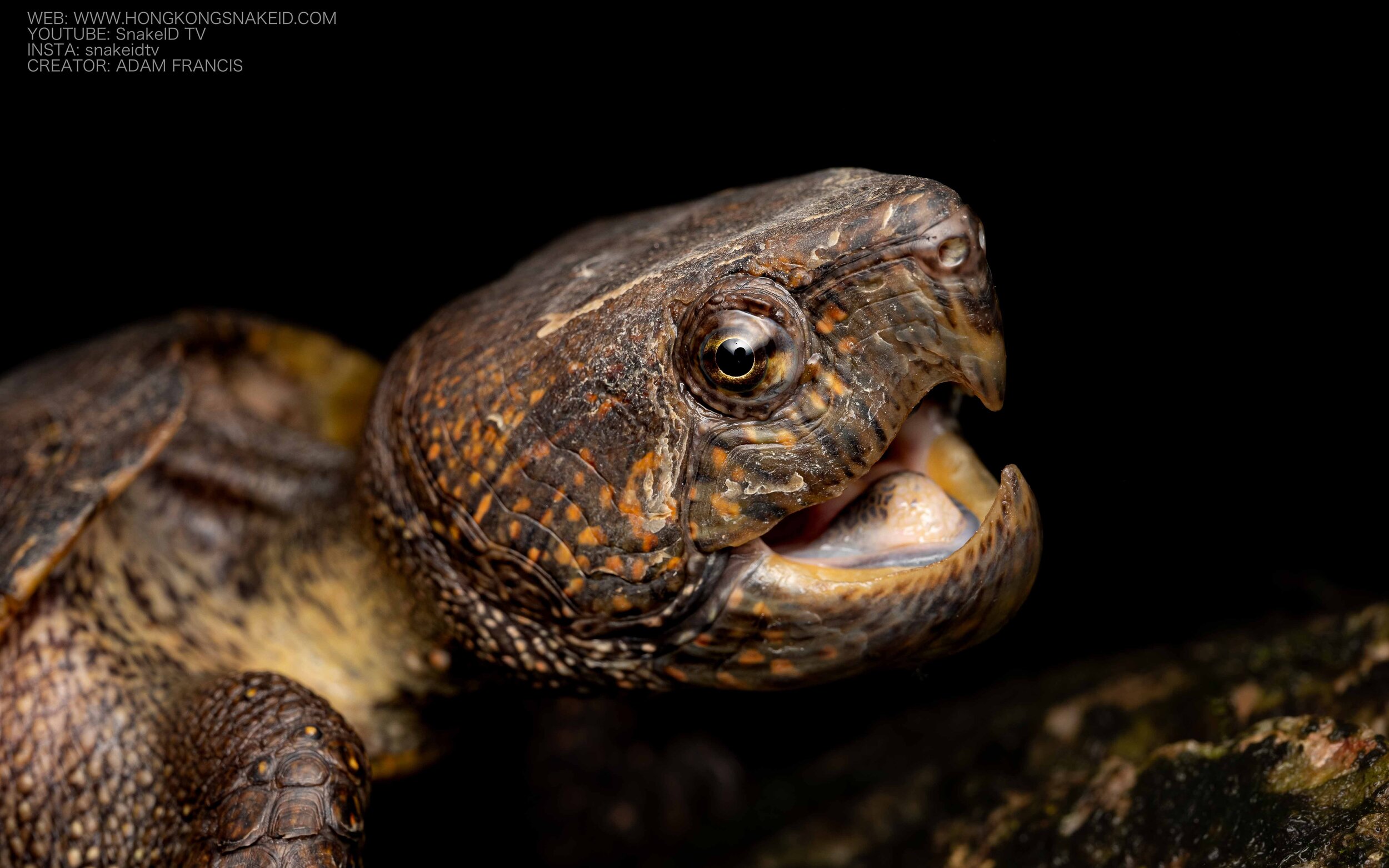
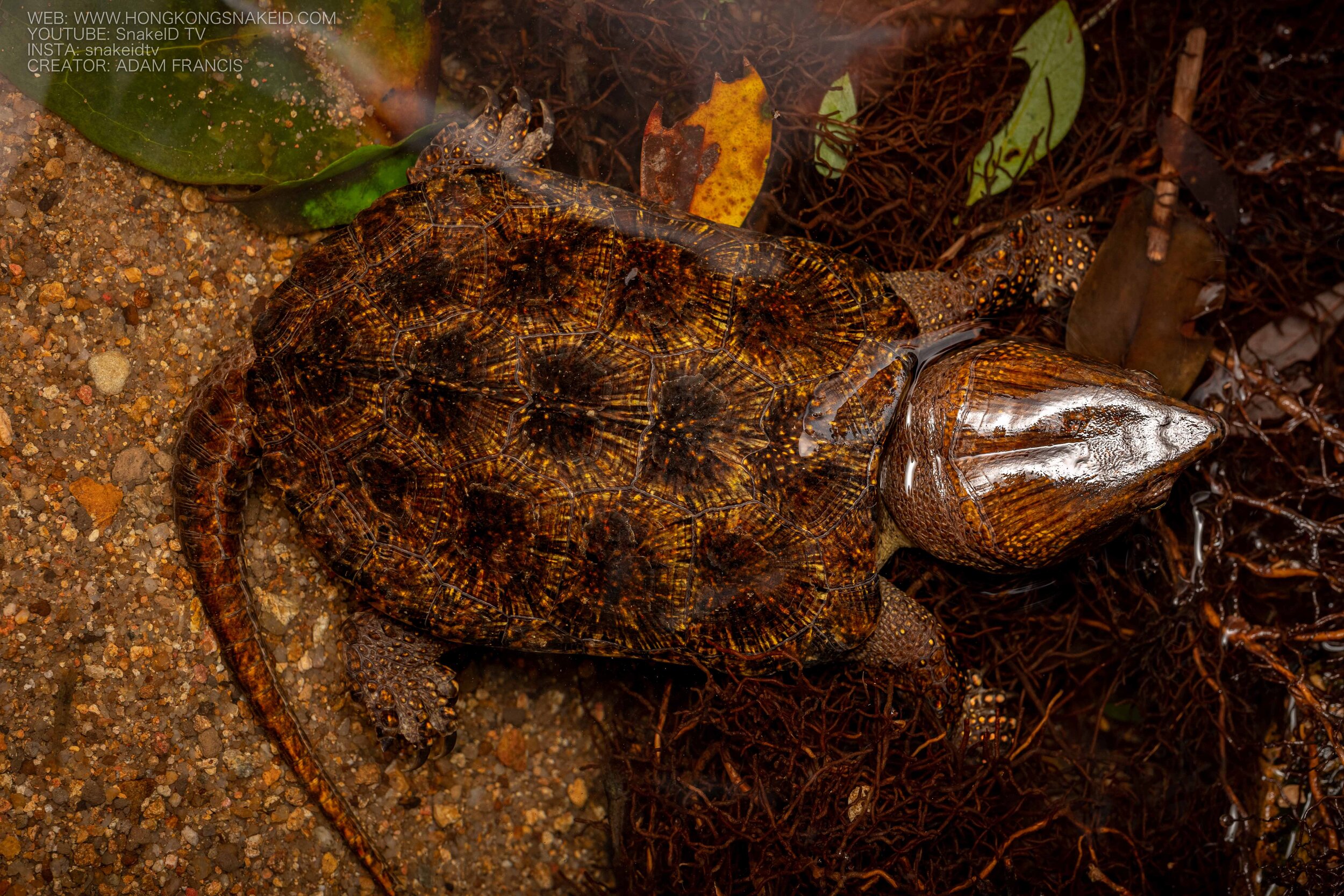
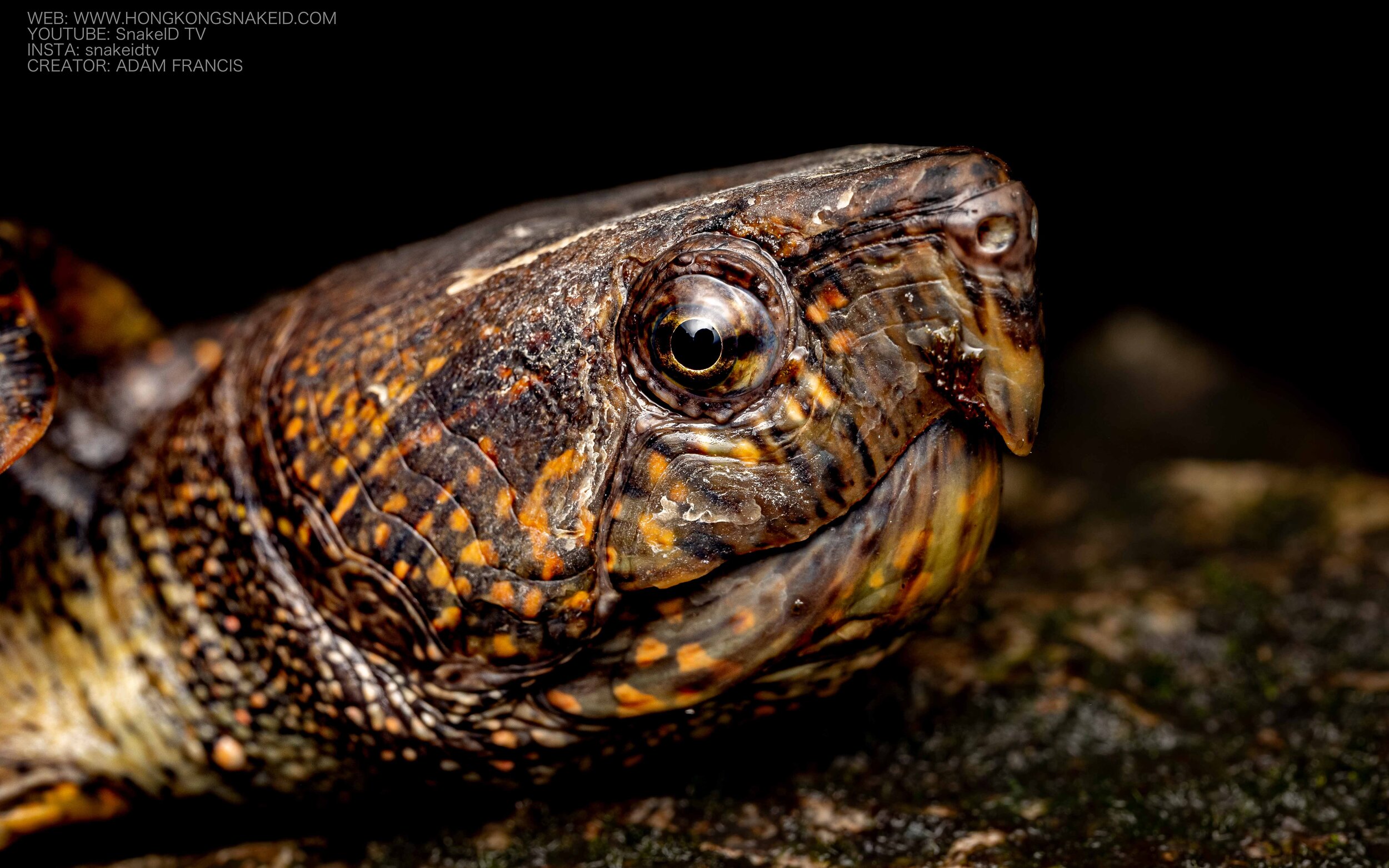
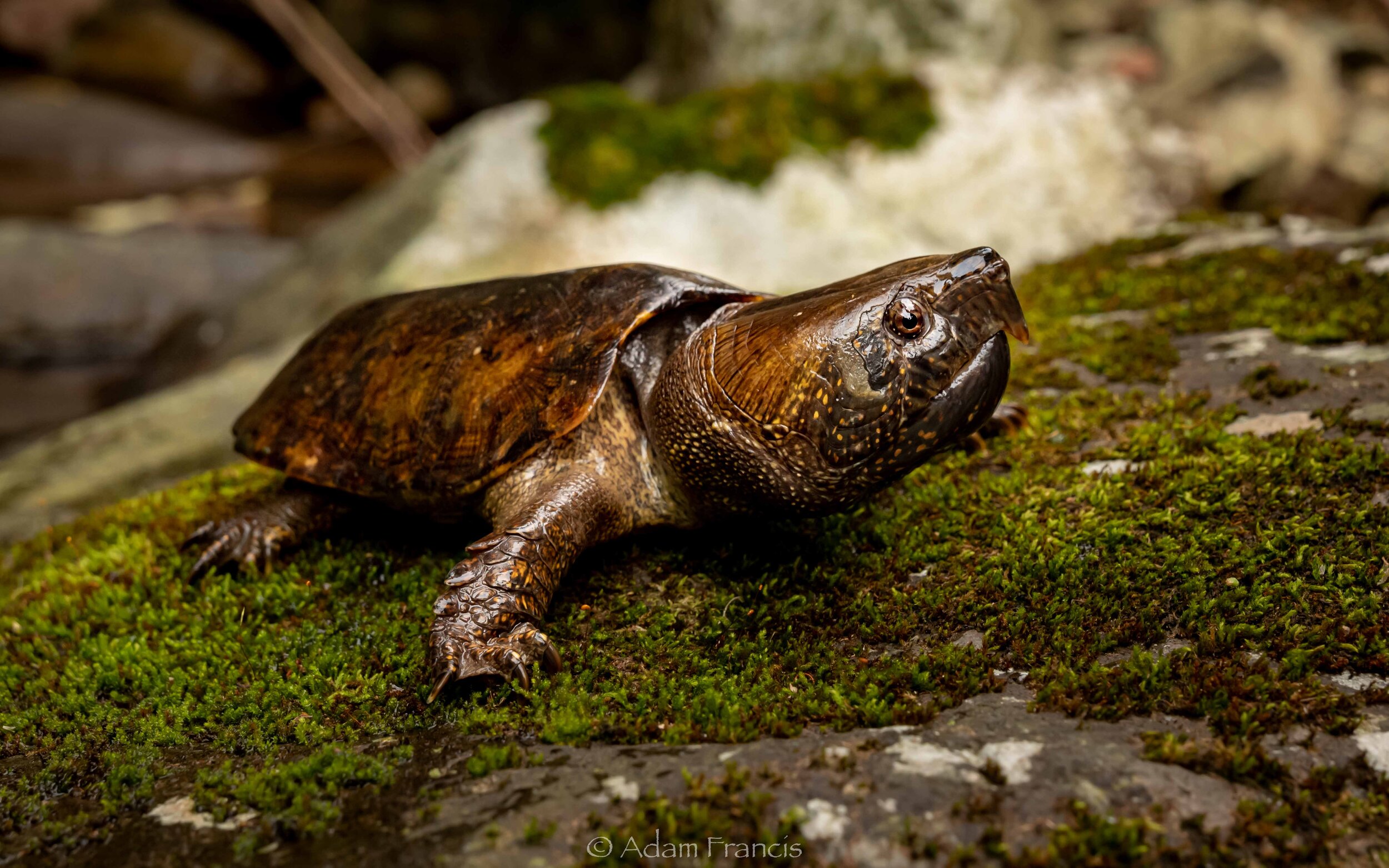
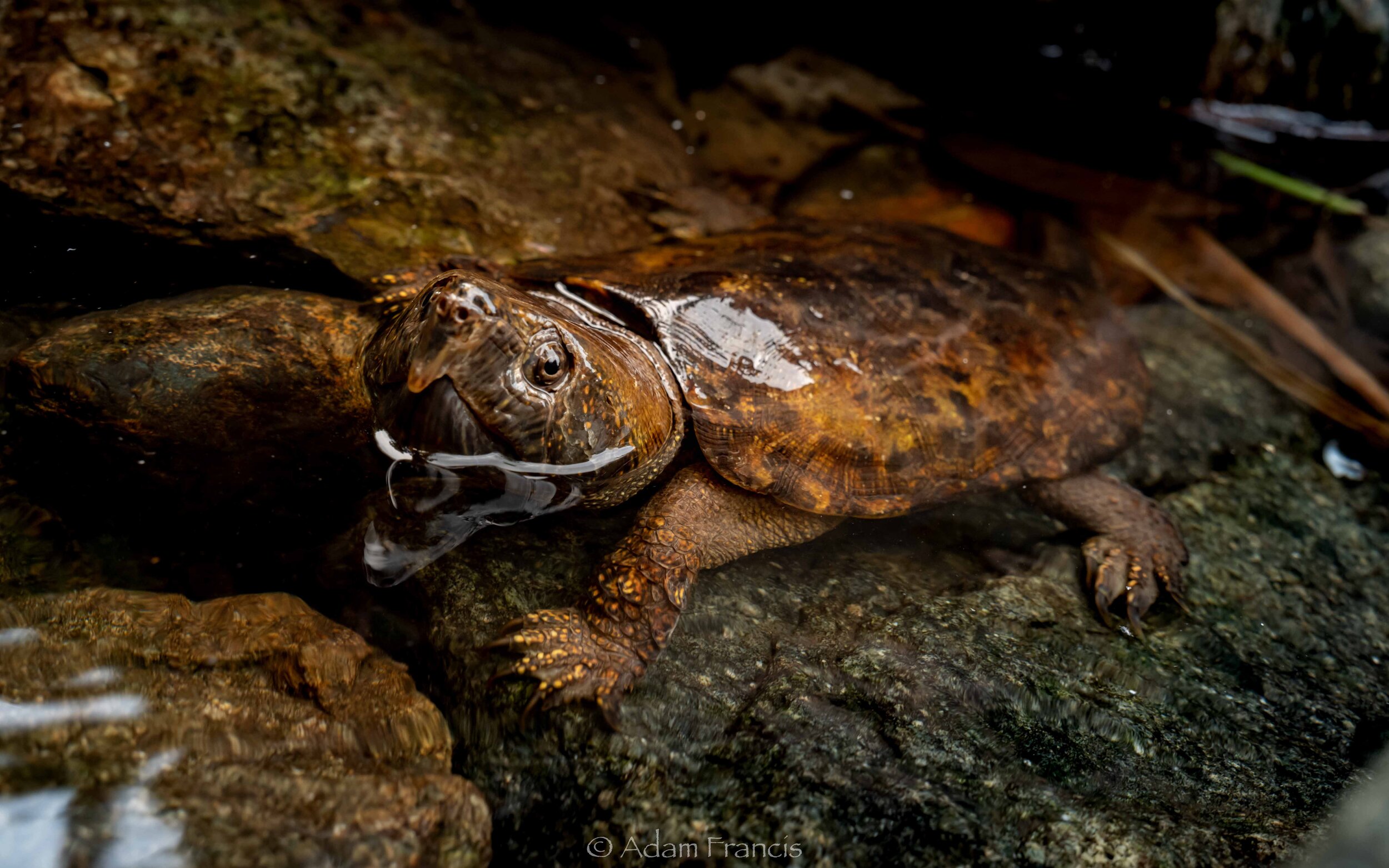
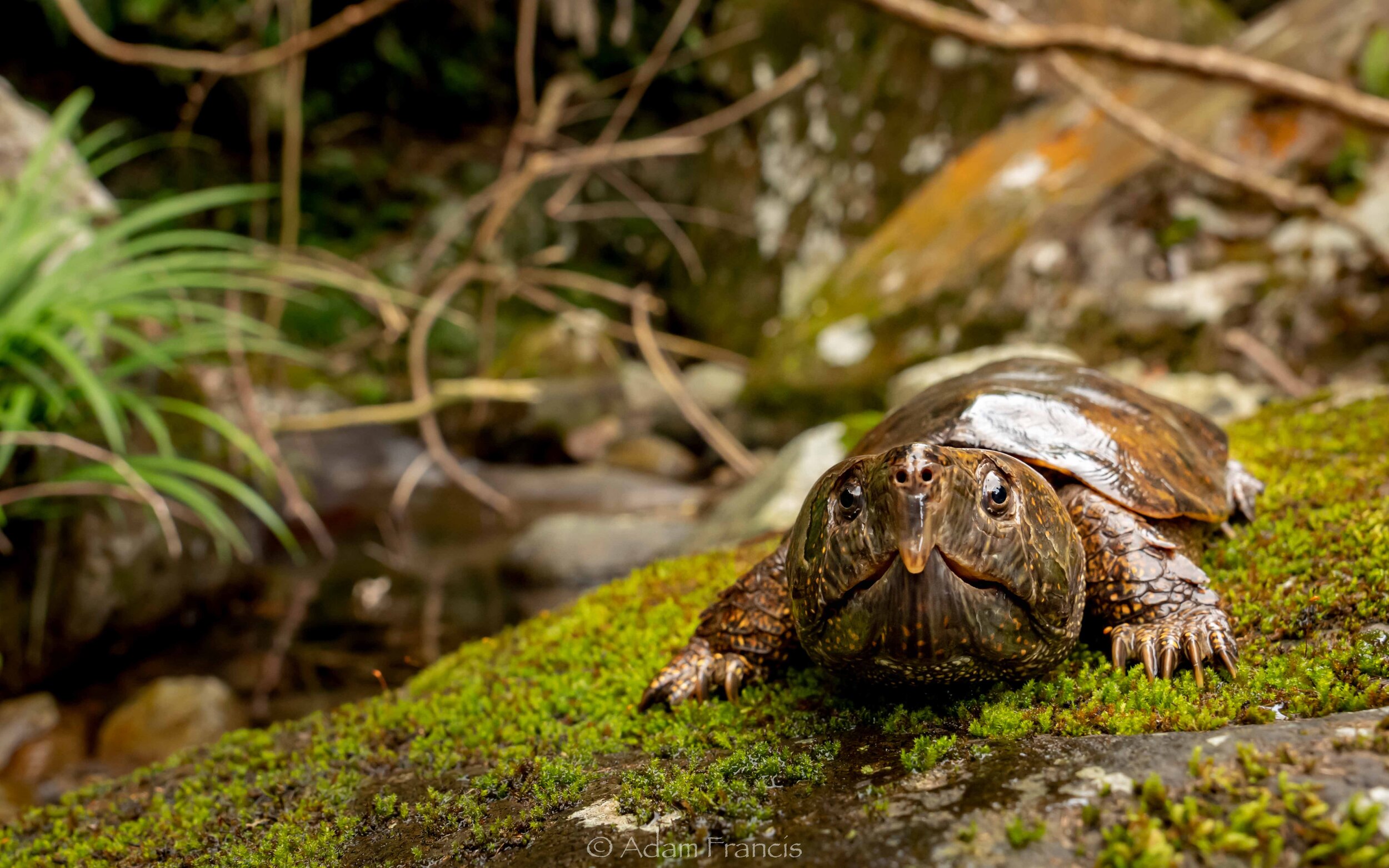
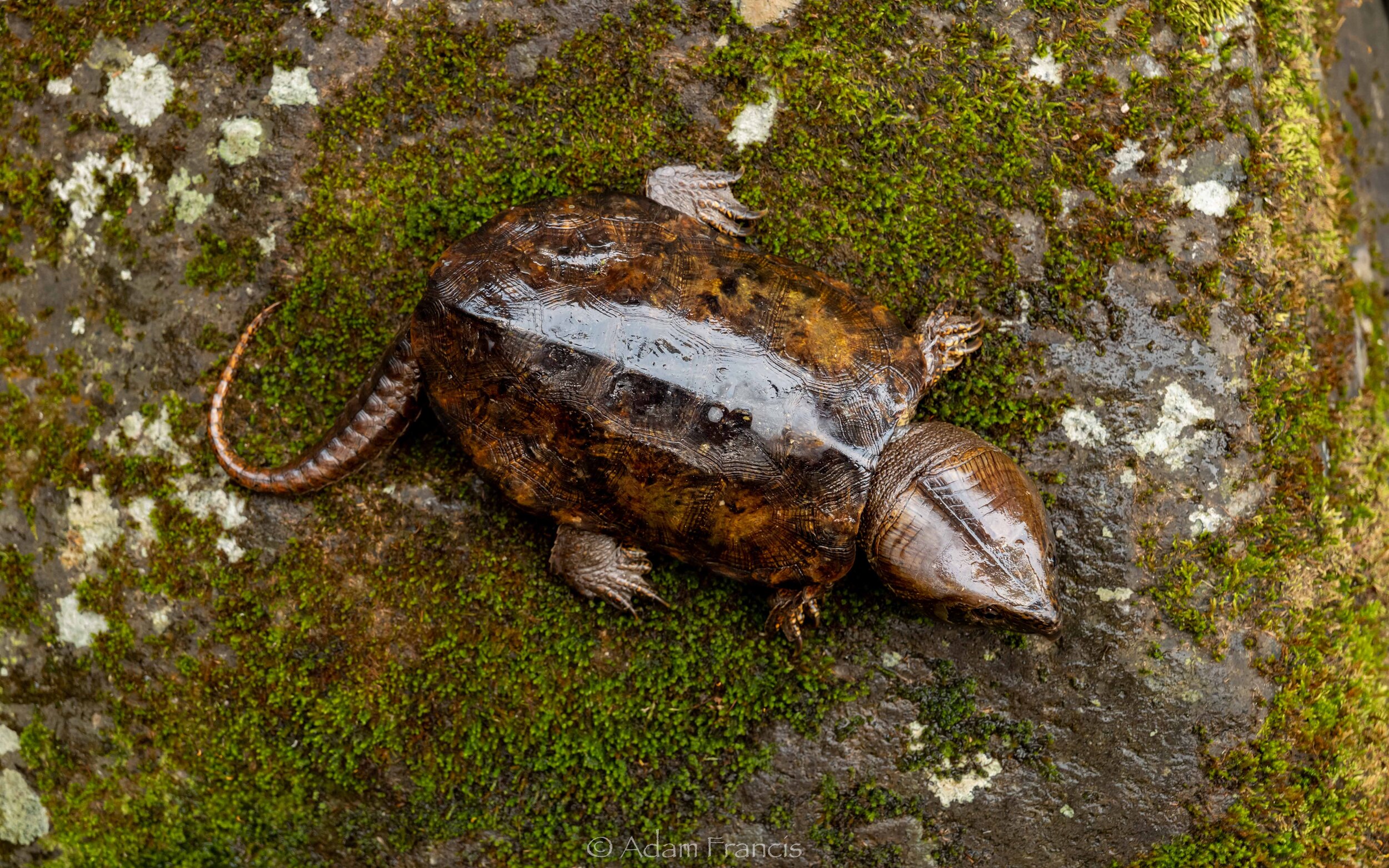
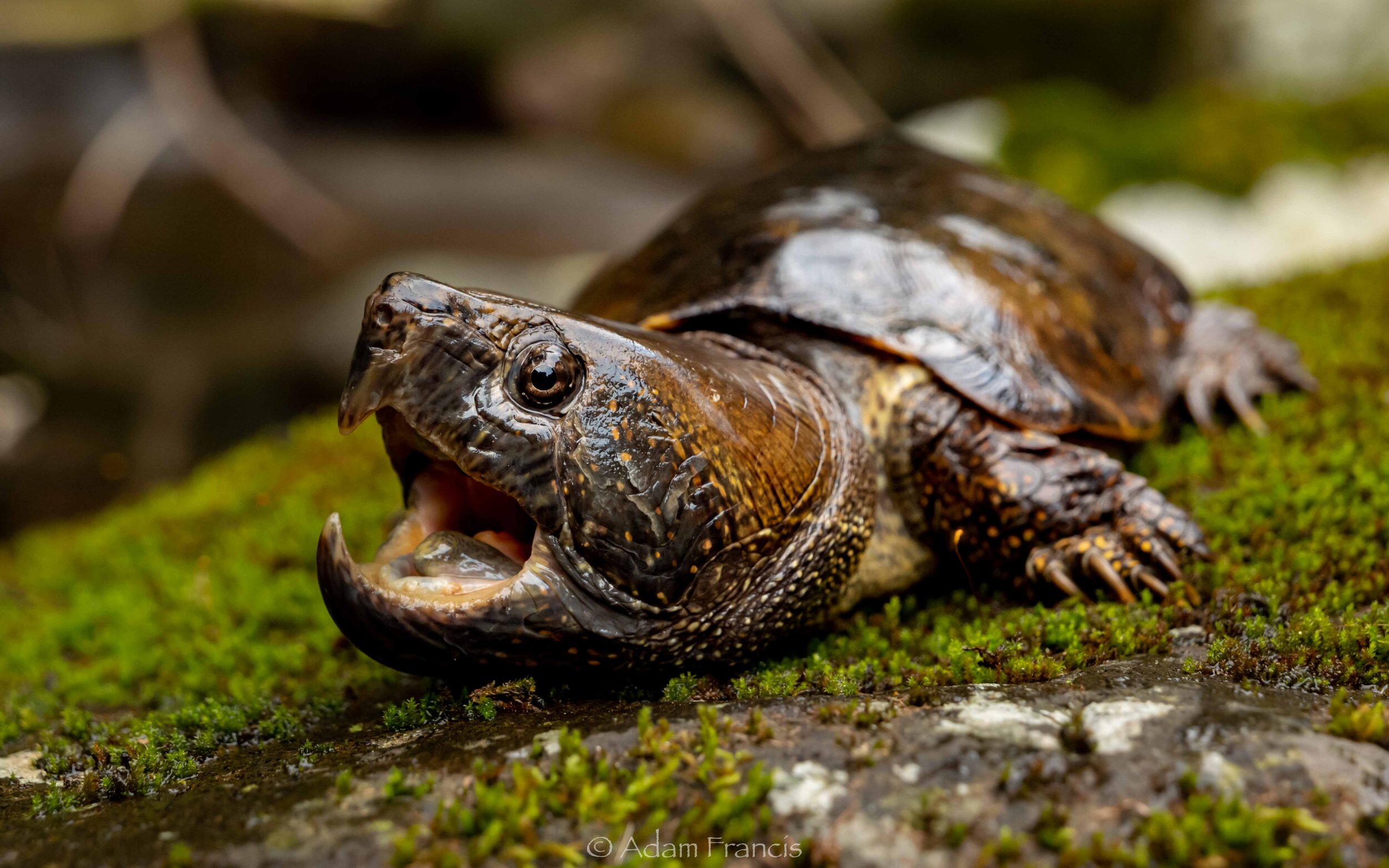
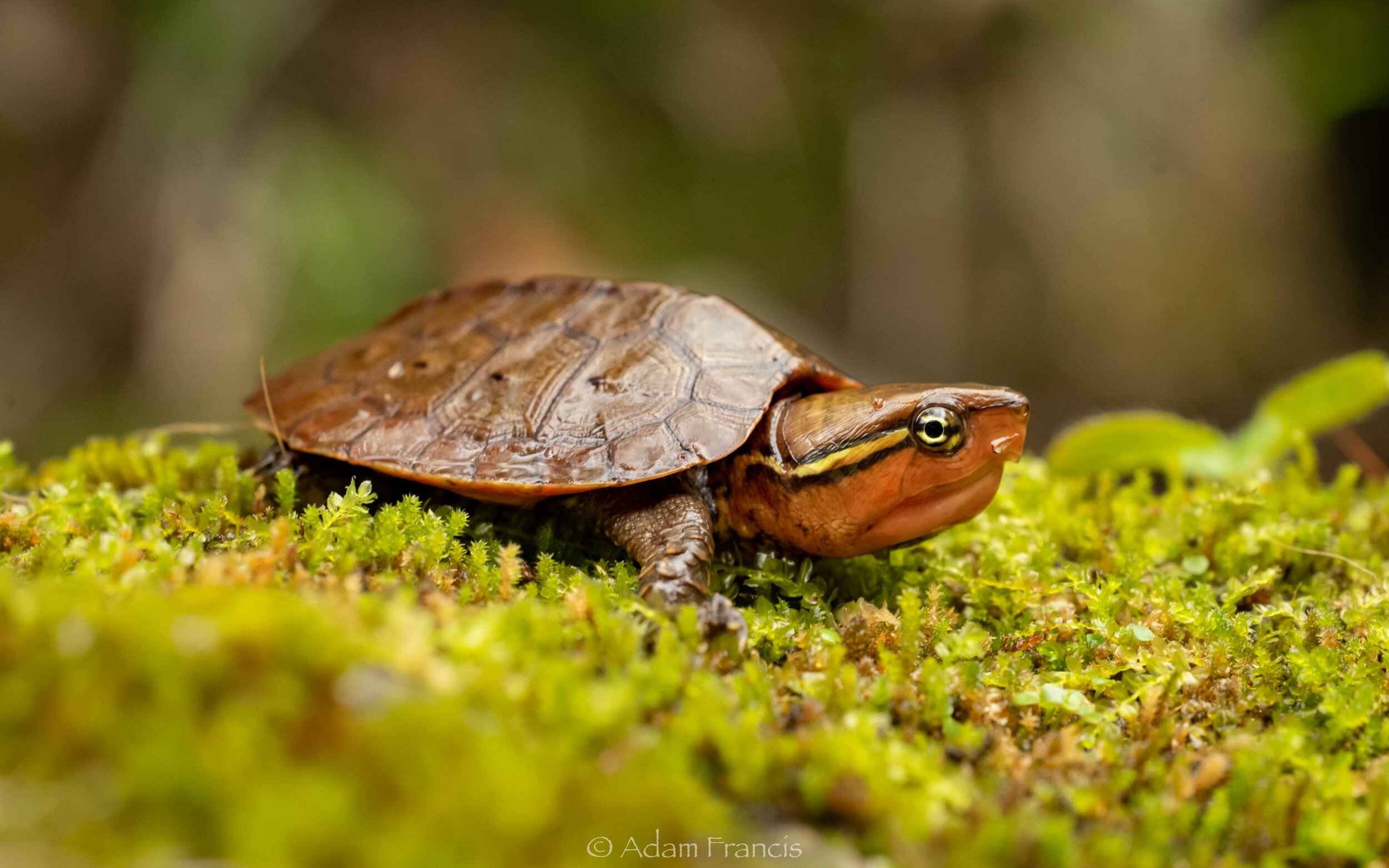
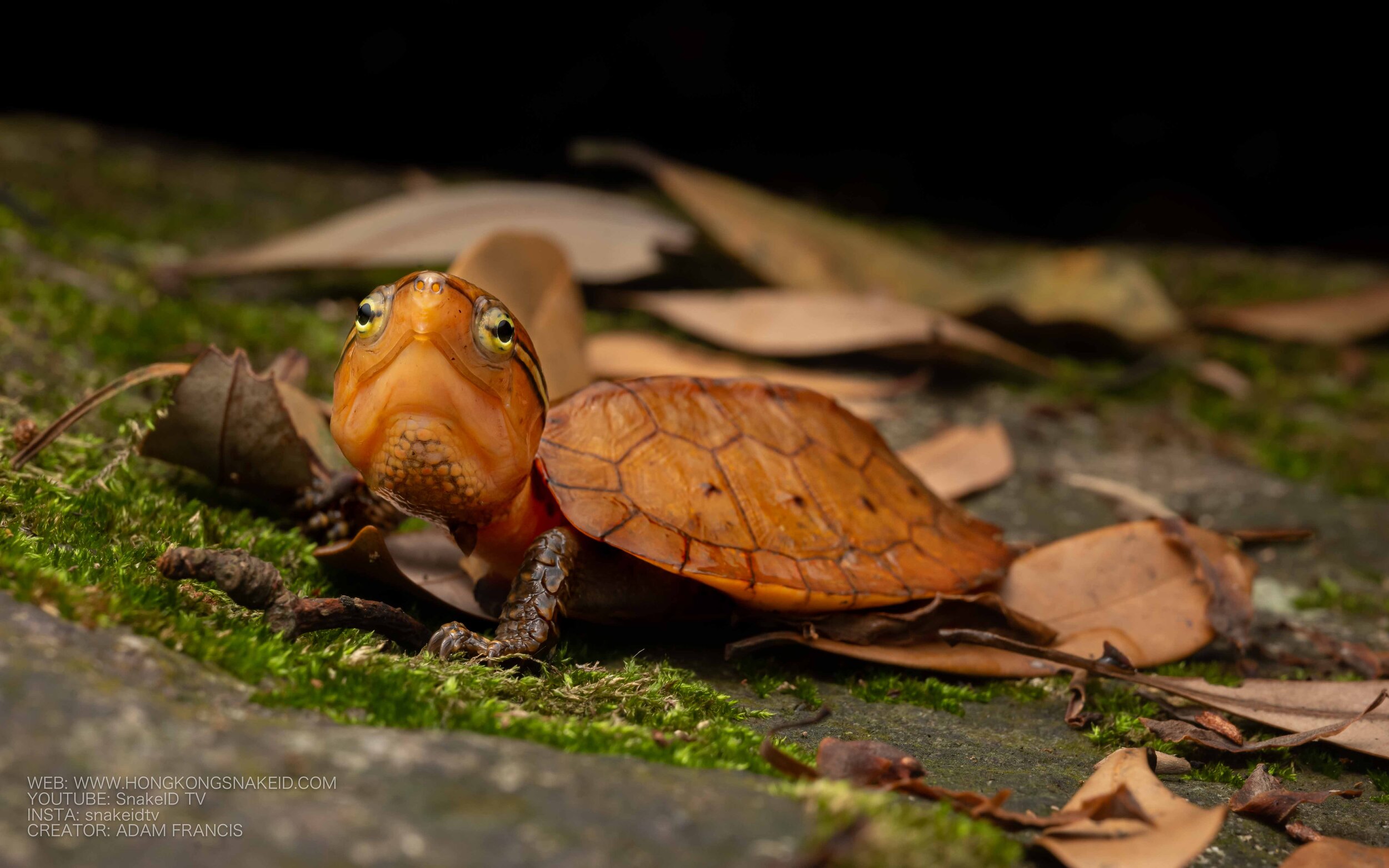
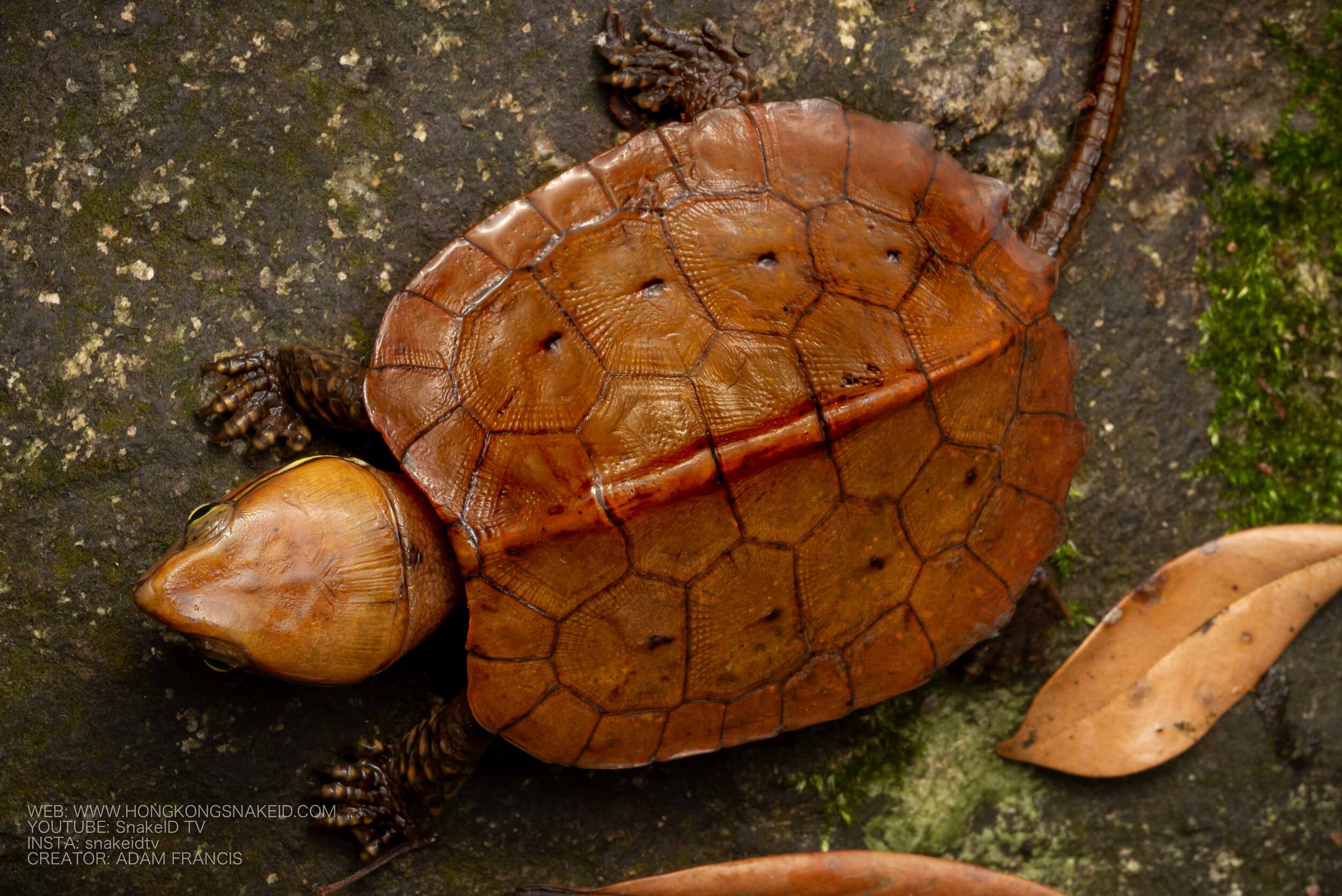
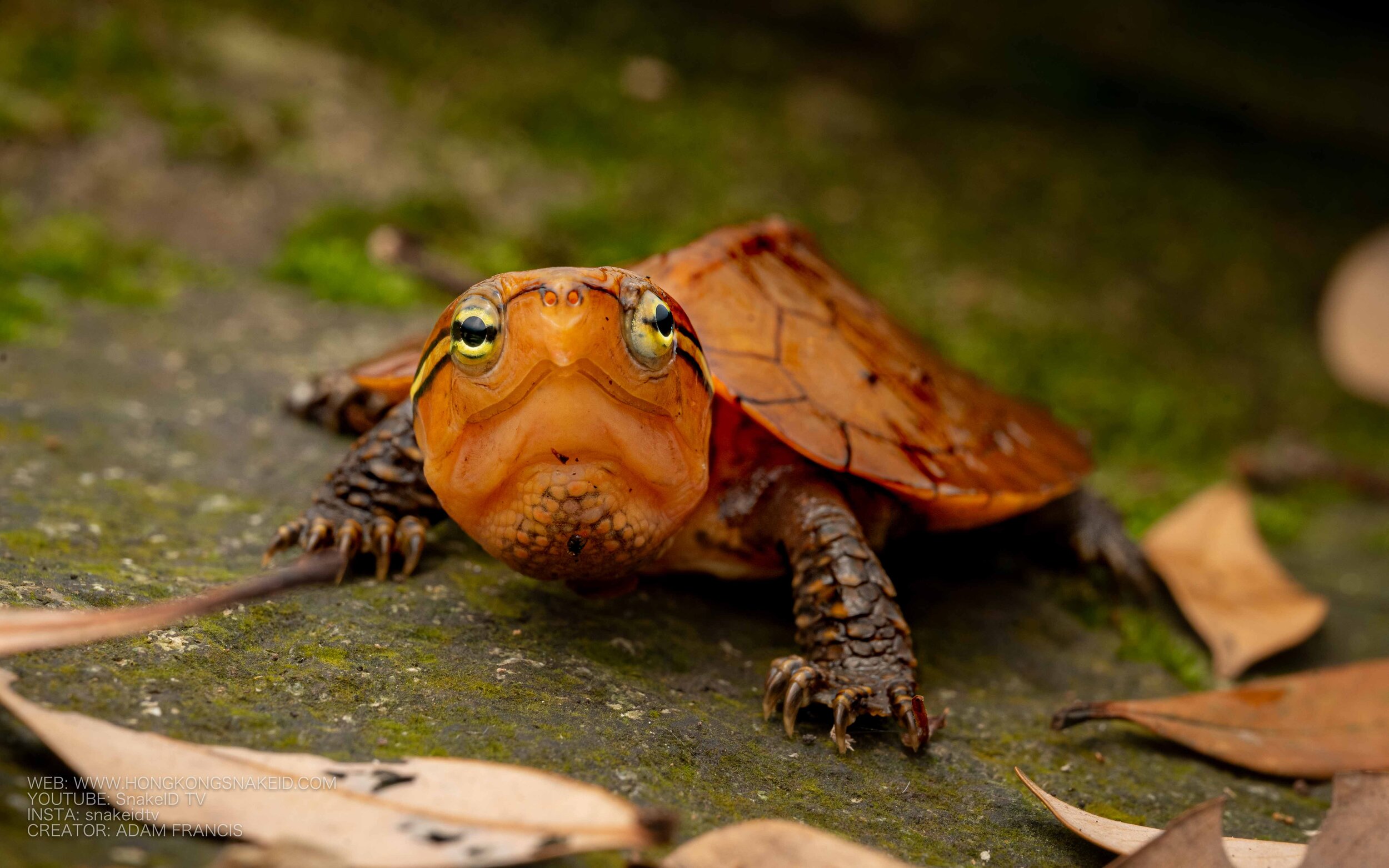
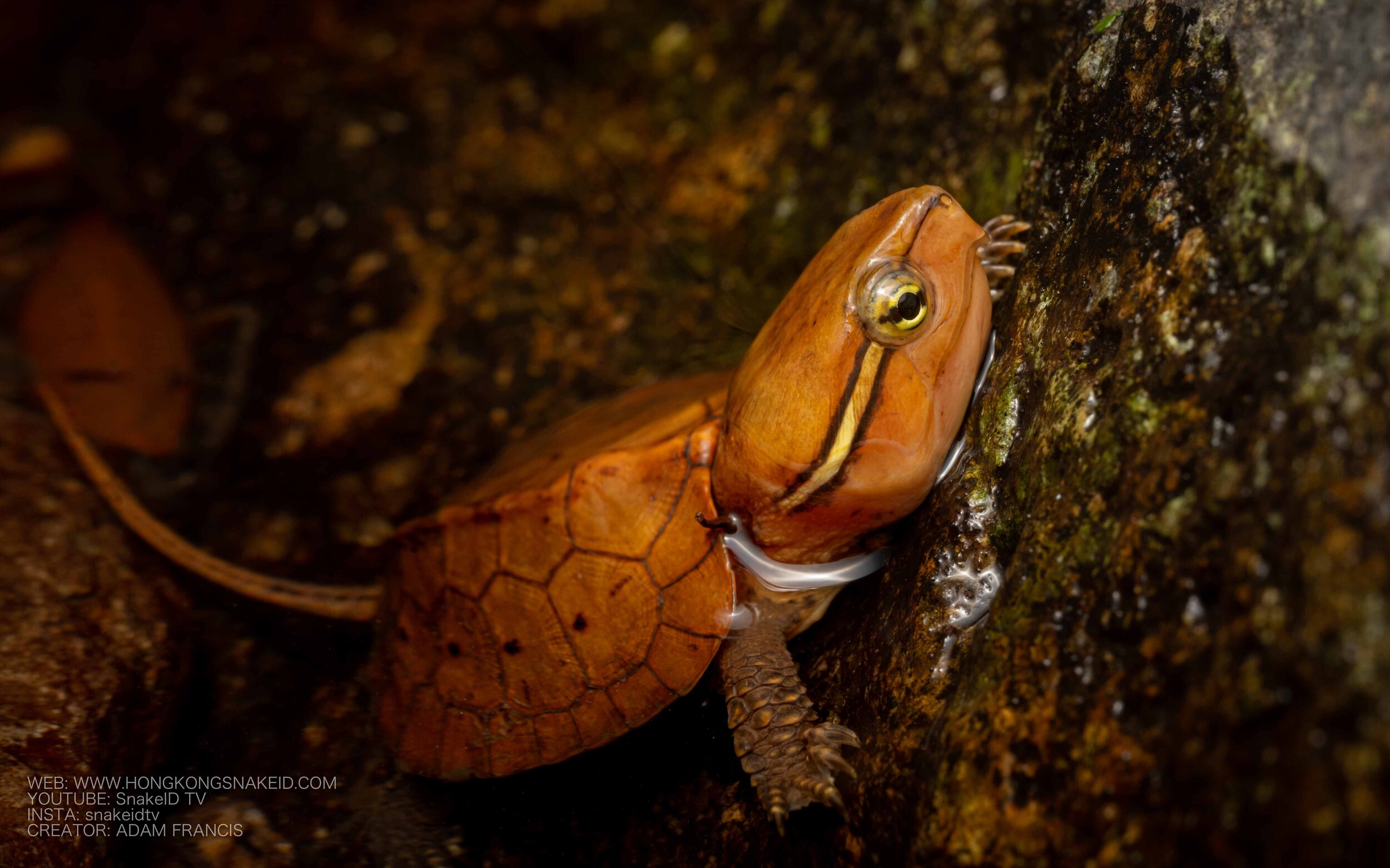
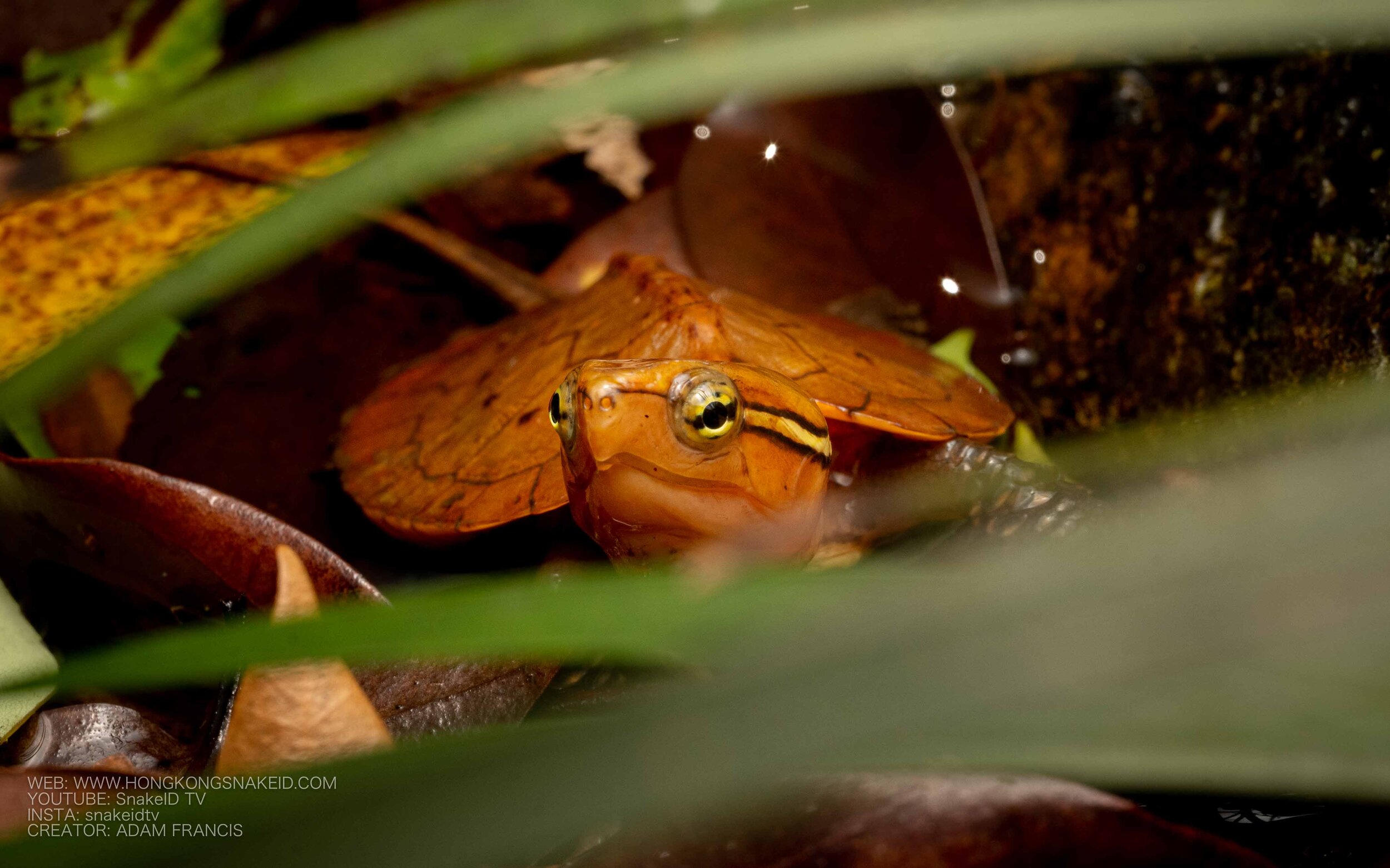
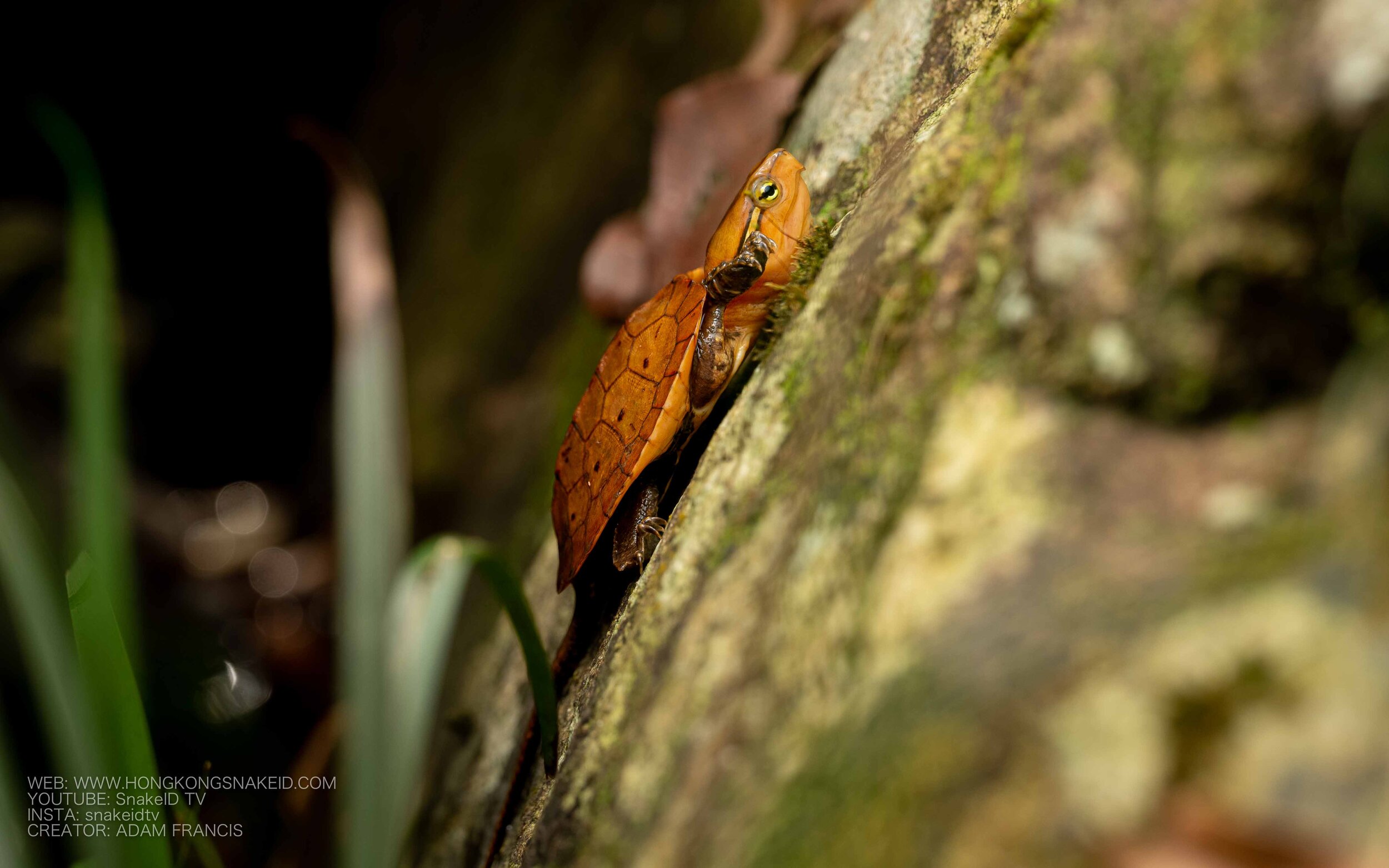
DESCRIPTION
Medium to large in size when full grown realtive to other Hong Kong species with shell length between 10 and 15 inches. Highly unique in apperance as both juveniles and adults. Juveniles are bright orange with a distinct yellow stripe on the side of the head with black marked plastron (belly shell). Adults are dark brown, sometimes with orange flecks on the head and shell. They are very distinct with extremely large bony heads that are too big to retract into the shell and long heavily armored tails. The shell of the adult is long, flat and relatively smooth.
BEHAVIOR
Observed to be active at night and day, the Big Headed Turtle appears to prefer spending large portions of its time in streams and pools in clear fast flowing mountain streams. They are highly adept at climbing rocks using their powerful legs and rigid tails as support. Also capable of navigating on land but are most at home in the water. Observed to eat fish, tadpols, carrion and small fresh water crustations. Thought to also opportunistically consume fruit. Due to their flat shells they are very quick to wedge themselves between rock crevaces and dig quickly into embankments to avoid predation. Adults and juveniles will open their mouths defensivly if handled and are capable of biting.
HABITAT
Relatively rare now in Hong Kong the Big Headed Turtle prefer fast flowing clear mountain streams. Given thier largely aquatic nature they will likely always be found in or very close to bodies of water.
POACHING
TURTLES ARE HEAVILY TRAFFICKED IN HONG KONG: Poachers, unfortunately are still very active in Hong Kong, regularly trapping rare turtle species to sell to the pet and Chinese Medicine trade. Turtles that end up sold into this trade are killed to become ingredients in traditional medicines. To avoid unintentionally aiding poachers, locations of turtles found in Hong Kong should never be shared on social media, and individuals should never be collected as pets given the potential for disruption to local breeding populations.

